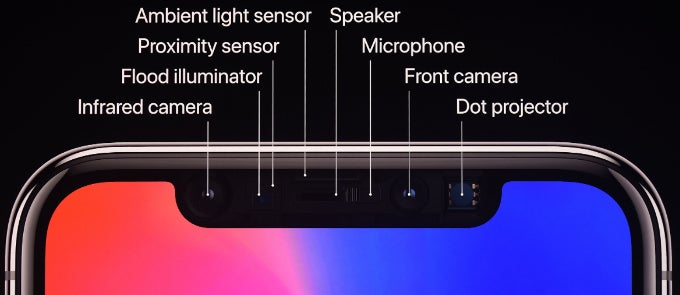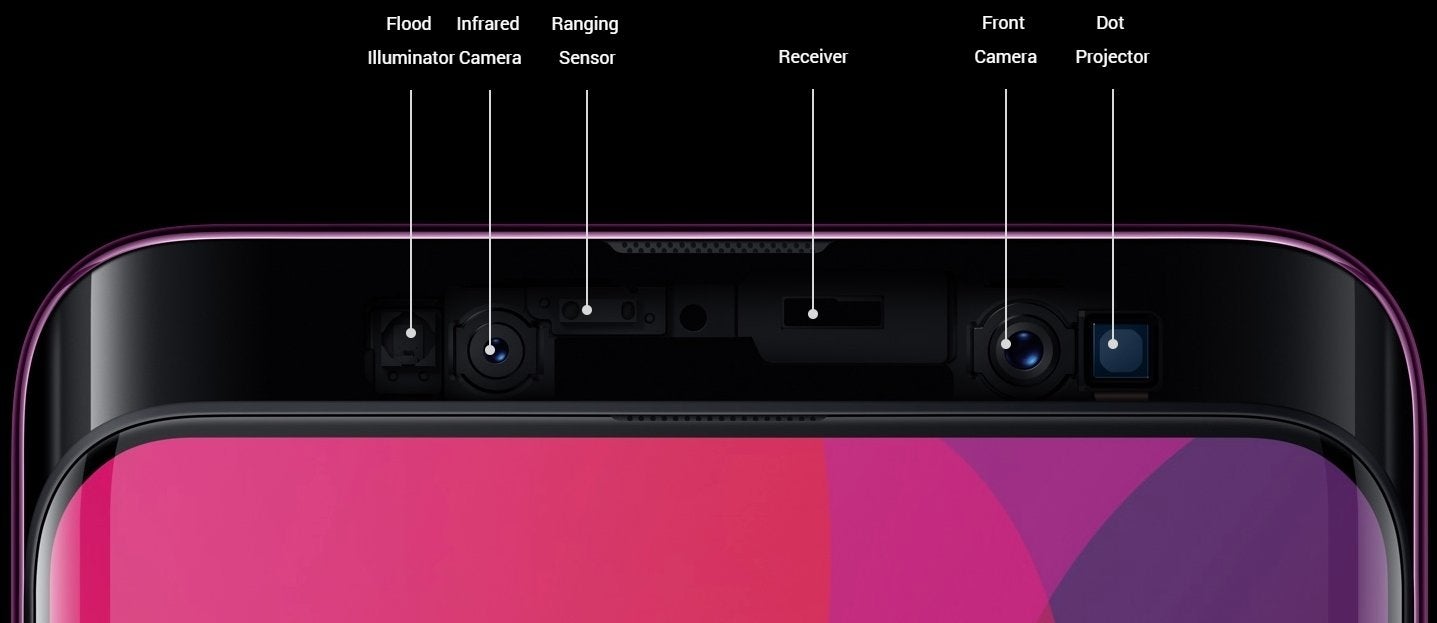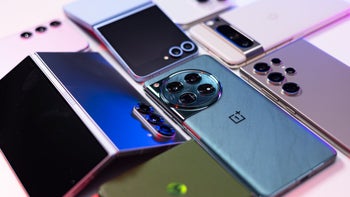The 3D face-scanning tech is no longer exclusive to the iPhone X

Android makers were quick on Apple's TrueDepth hardware uptake
It doesn't simply use the front camera, coupled with an emitter at best, and apply software trickery for storing and reading your face afterward. In fact, the extra parts that make Face ID and Animoji on the iPhone X possible, are lovingly called Romeo and Juliet by Apple's suppliers, as they have to be paired together for the system to work.
The tricky-to-produce Romeo is a dot projector that throws in no less than 30 000 near-infrared beams at your face projecting a pattern onto it, while Juliet is the infrared camera that collects and infers the depth perception by calculating where the lines break via an algorithm. You also need something called flood illuminator - a name worthy of the Back to the Future franchise.

Apple's TrueDepth camera tech got copied by Oppo and Xiaomi
These extra parts are the ones that Apple struggled to secure enough yield of in the first weeks of iPhone X production, but now the floodgates have opened, it seems. A few manufacturers already announced phones with true 3D face-scanning technology similar to the one Apple is using, despite analyst claims that Apple is two years ahead of the competition in that realm, and Phil Schiller's blurp that Android's attempts at Face ID will all "stink," as they have no TrueDepth camera systems.
First in line was Xiaomi with its Special Edition Mi 8, which also sports in-display finger scanners for some extra biometry (and bragging rights), and you can see that its animated emojis are trying to mimic Apple's Animoji efforts in the video below.

The other one is the freshly-announced Oppo Find X that hailed from the Louvre in Paris yesterday with an intriguing slide-out camera system. Don't believe that these are the first Android phones with true 3D face-readers? Well, check out the components they are using for the face recognition technology, compared to Apple's schematics, and marvel at the quick uptake. Granted, Oppo says that its dot projector splashes 15,000 points of light onto your face, while the iPhone X does twice the amount, yet something tells us those would be enough for Oppo to tout 0.5s from sliding your finger up the locked screen to the camera system popping up, reading your face and unlocking the phone. Sign of the times.

Oppo's 3D face-scanning system on the Find X is a carbon copy of Apple's
Given that the iPhone X Face ID technology is now out there in the Android world, we wouldn't rule out the growing chatter that Samsung will incorporate it in the Galaxy S10, and yet would love to stage a fight between Apple's Animoji and Oppo's fresh-out-of-the-oven Omoji, given they are both powered by a flood illuminator and dot projector now.

Oppo's Omoji, brought to you by 3D face-scanning













Things that are NOT allowed: